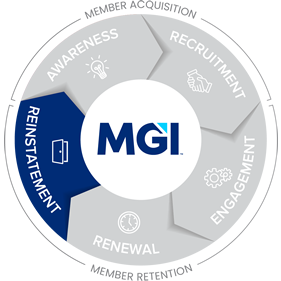Successful membership growth depends on strong renewals but relies on successful acquisition. The fact is that it’s impossible for an organization to renew its way to growth, so membership acquisition must be an ongoing effort or the organization will shrink. Member acquisition includes two steps in the Membership Lifecycle—Awareness and Recruitment.
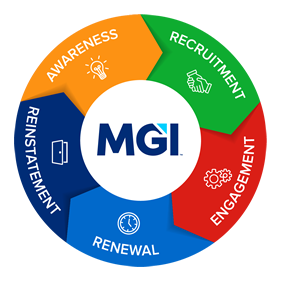
The first step in the MGI Membership Lifecycle is Awareness—recognition of the organization by the segment or profession it serves. While awareness before an acquisition begins is not mandatory, recognition—assuming it is positive—can make the work of the acquisition effort much easier and more successful.
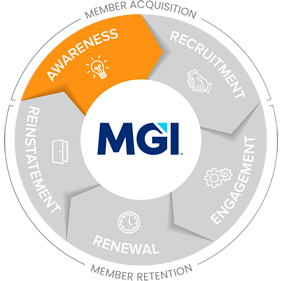
Carefully crafted and laser-focused, successful recruitment is dependent on several factors that all can add or detract from the desired result.
Understanding Target Prospects—who, what, where, when, and how they are reached. This is the most important component in member prospecting.
The Message to be used evolves from research-based knowledge of an organization’s indispensability—the one thing it does better than anybody else—with copy that is benefit, not feature oriented.
Creative Design is intended to drive interest and promote receptivity to the message. It is the most fickle ingredient in membership acquisition and relies particularly on testing to get it right.
The Offer seeks to strike a balance between what prospects will give up (dues) and what they will receive in exchange (benefits) by becoming a member. It’s often the final and most critical hurdle in a prospect’s decision process.
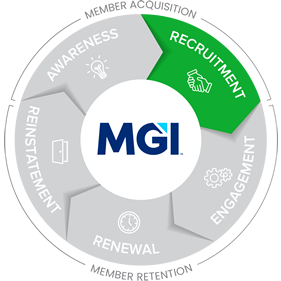
Member retention includes three steps in the Membership Lifecycle—Engagement, Renewal, and Reinstatement.
If membership organizations are to grow, strong acquisition programs should be followed by successful retention programs, and lapsing members should be rescued by reinstatements.
If retention is low, particularly first year conversion rates, membership organizations can exhaust qualified new member prospect lists quickly. Once prospects have tried membership and elected to discontinue it, winning them back a second time can be difficult.

Successful engagement programs set the stage for successful renewals by helping members become benefit users.
MGI testing has shown that members who have a non-dues transaction with their organization are far more likely to continue their membership. A concerted engagement series of month-by-month contacts can increase retention rates substantially.
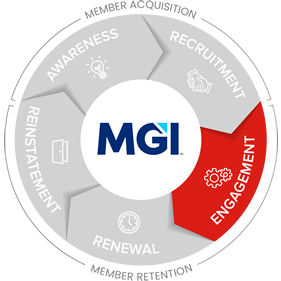
Renewals are an important foundation for organizational growth. The act of deciding to renew or not is a vote of confidence—or no confidence.
The renewal process should be continued until the cost of sending renewal reminders exceeds the dues value. Many successful organizations go even further, sending renewal notices until the cost exceeds the lifetime value of their dues payments.
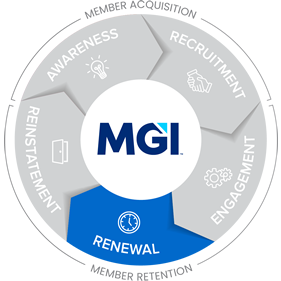
Reinstatements are a regular component of membership growth programs every organization should have in place to bring the Membership Lifecycle full circle.
The most likely member to return to an association is the one who most recently left, and it is much easier and cheaper to entice former members back into the fold than it is to find new prospects and turn them into members.
Reinstatement programs present fresh messaging and perhaps new offers for lapsed members to reconsider the decision to join; or join once again if they forgot or somehow unintentionally did not renew.
